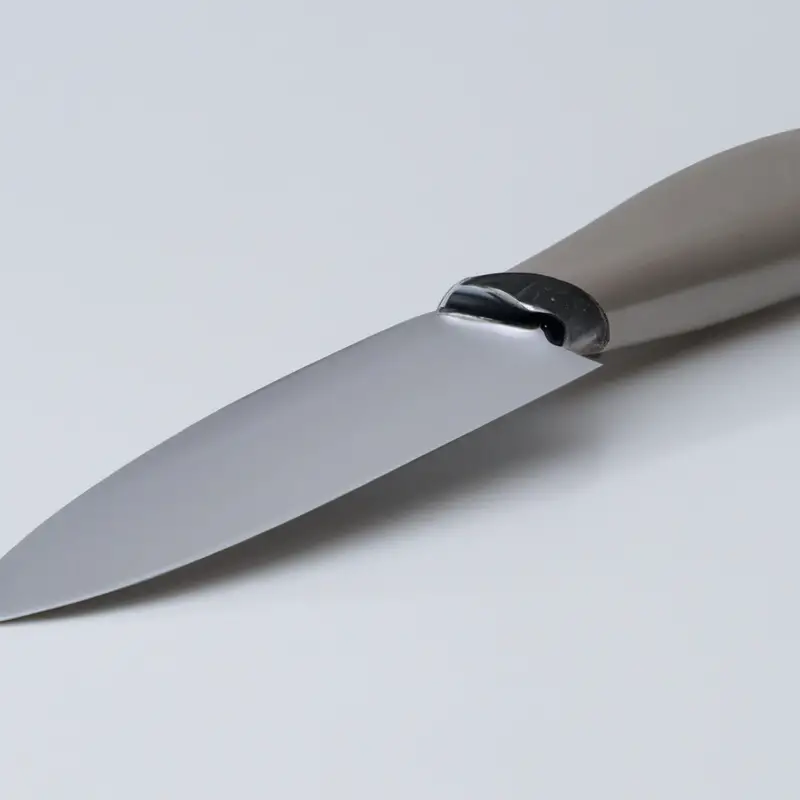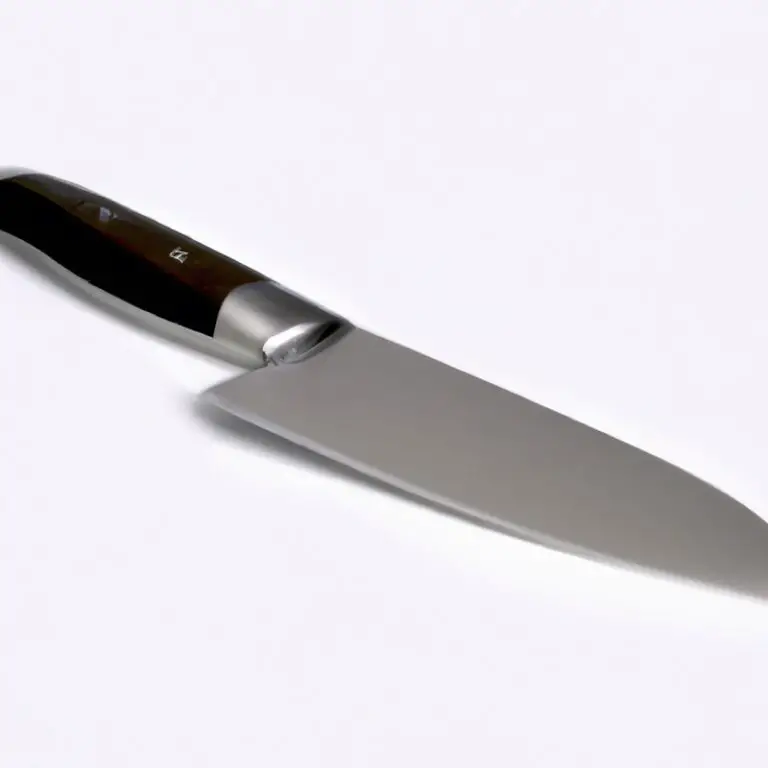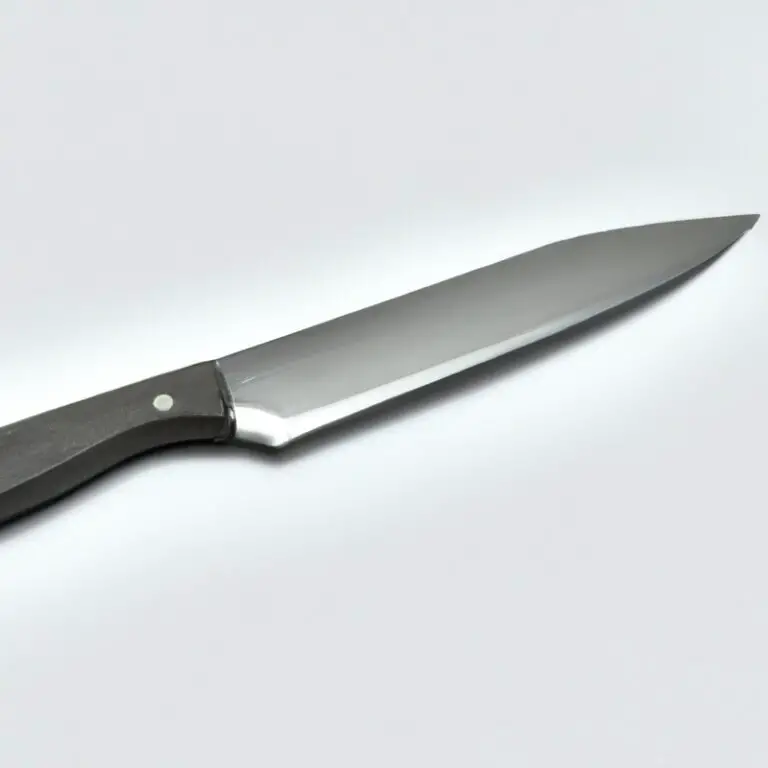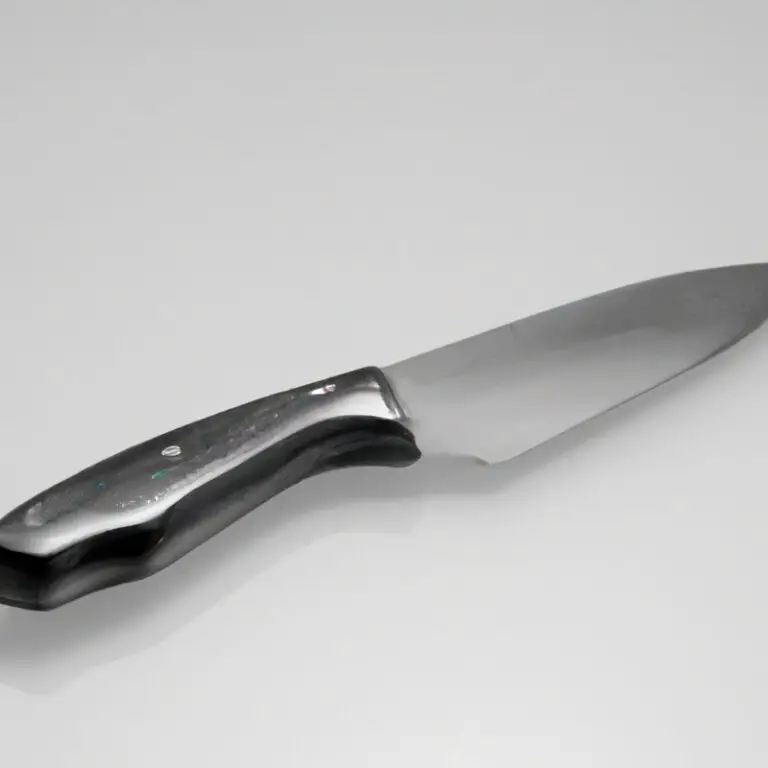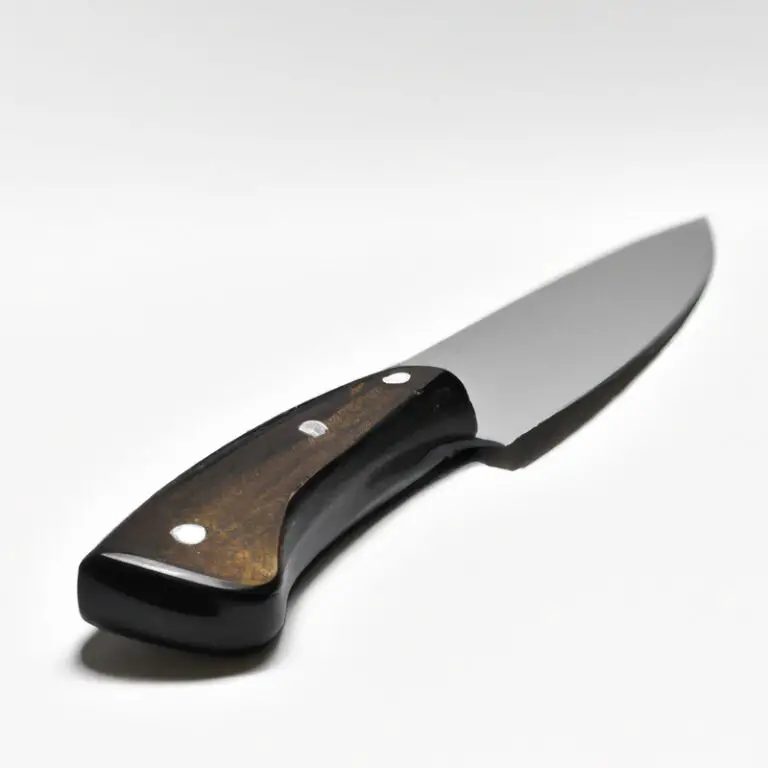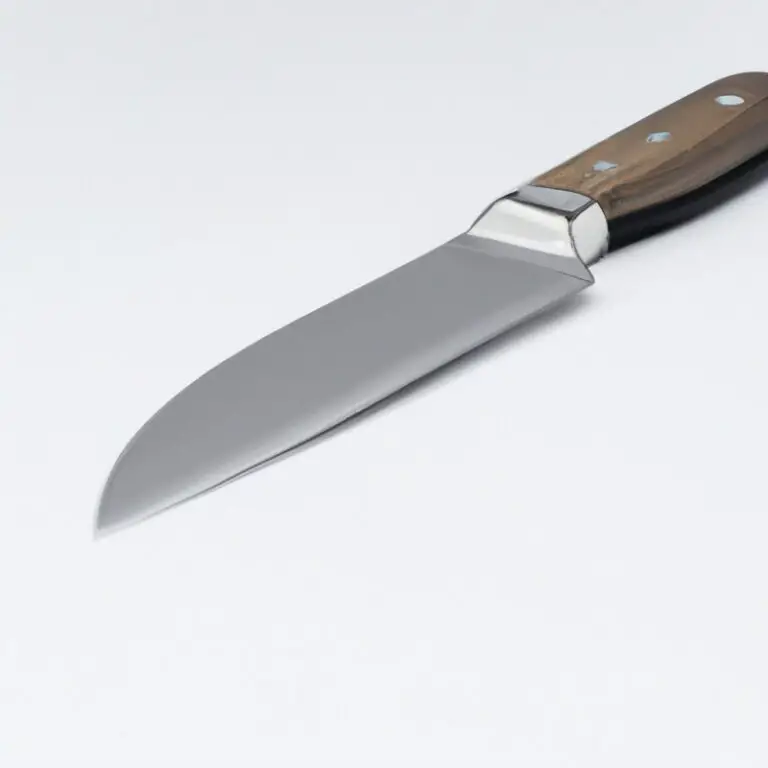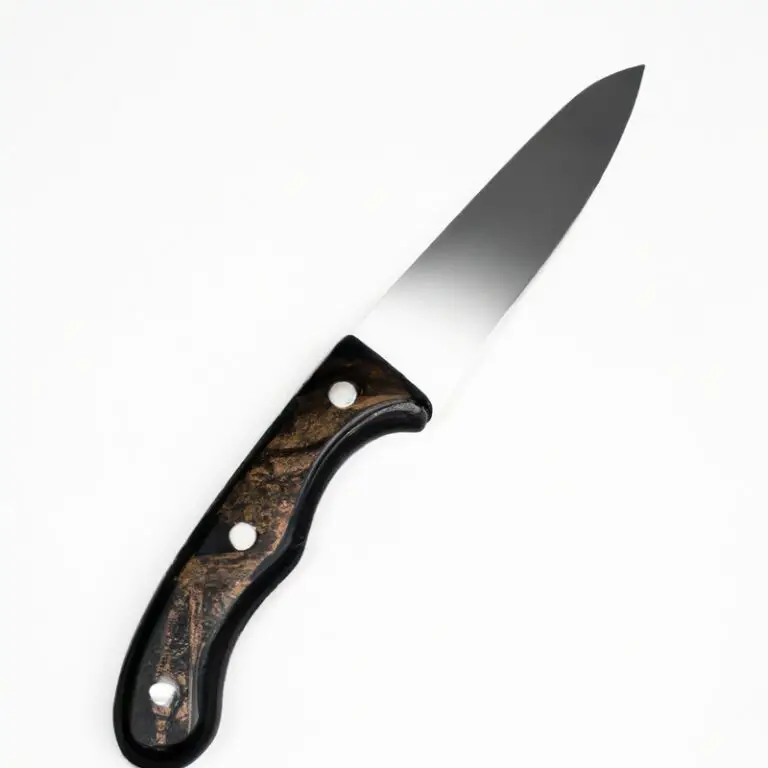Can I Use a Paring Knife To Peel Tough-Skinned Fruits Like Kiwis? Definitely!
Key Takeaways:
- A paring knife can be used to peel tough-skinned fruits like kiwis, but it requires proper techniques and caution.
- For best results, make sure to sharpen your paring knife and hold the fruit firmly while peeling it.
- Consider using a serrated peeler or a spoon to remove the skin if you find that a paring knife is too difficult to use.
- Regardless of the tool you use, always wash and dry the fruit beforehand to ensure cleanliness and safety.
Are you tired of struggling to peel tough-skinned fruits like kiwis with a regular kitchen knife? Look no further than the trusty paring knife.
As someone who has spent years in the kitchen perfecting fruit peeling techniques, I can confidently say that a paring knife is the solution to all your fruit peeling woes.
In this article, I will explain the purpose and design of a paring knife, discuss which fruits it can effectively peel, and provide tips and techniques for using it to peel kiwis and other tough-skinned fruits. Master the art of fruit peeling with this ultimate guide to using a paring knife.
| Paring Knife vs. Tough-skinned Fruits |
|---|
| Paring Knife |
| Small knife with a pointed blade used for peeling and trimming fruits and vegetables |
| Tough-skinned Fruits |
| Examples: kiwis, mangos, pineapples, avocados, etc. |
| Have firm and thick skin that makes them difficult to peel |
| Can contain a lot of nutrients and fiber in the skin |
| Pros of Using a Paring Knife to Peel Tough-skinned Fruits |
| Can be used to create precise cuts and designs on the fruit |
| Easy to maneuver around small and curved areas |
| Cons of Using a Paring Knife to Peel Tough-skinned Fruits |
| Can be time-consuming and require patience for thicker skins |
| Risk of cutting yourself if not used properly |
| May not be the most efficient method for peeling large quantities of fruit |
| Conclusion |
| A paring knife can be used to peel tough-skinned fruits like kiwis, but it may not be the most efficient or fastest method. Consider also using a vegetable peeler or blanching the fruit to make the skin easier to remove. |
Understanding the Purpose and Design of a Paring Knife
The purpose of a paring knife is to handle tasks that require precision. It is a small, straight blade with a pointed tip, typically 3-4 inches long.
The design allows it to be used for peeling, trimming, and shaping fruits and vegetables.
The blade is usually made of high-quality steel, making it sharp, durable, and easy to maintain. Paring knives come in many different shapes and sizes, with some having a serrated edge for cutting softer fruits like tomatoes.
Understanding the purpose and design of a paring knife can help you choose the best knife for a specific task, including peeling tough-skinned fruits like kiwis.
Types of Fruits That Can Be Peeled with a Paring Knife
Paring knives are suitable for peeling a wide range of fruits, including apples, pears, oranges, lemons, limes, and peaches. They can also work well for peeling softer-skinned fruits like bananas and mangos.
However, for tough-skinned fruits like kiwis, a paring knife might not be the most effective option.
It could be difficult to maintain control over the knife and may end up damaging the fruit. In such cases, it is advisable to use a serrated knife or a dedicated fruit peeler.
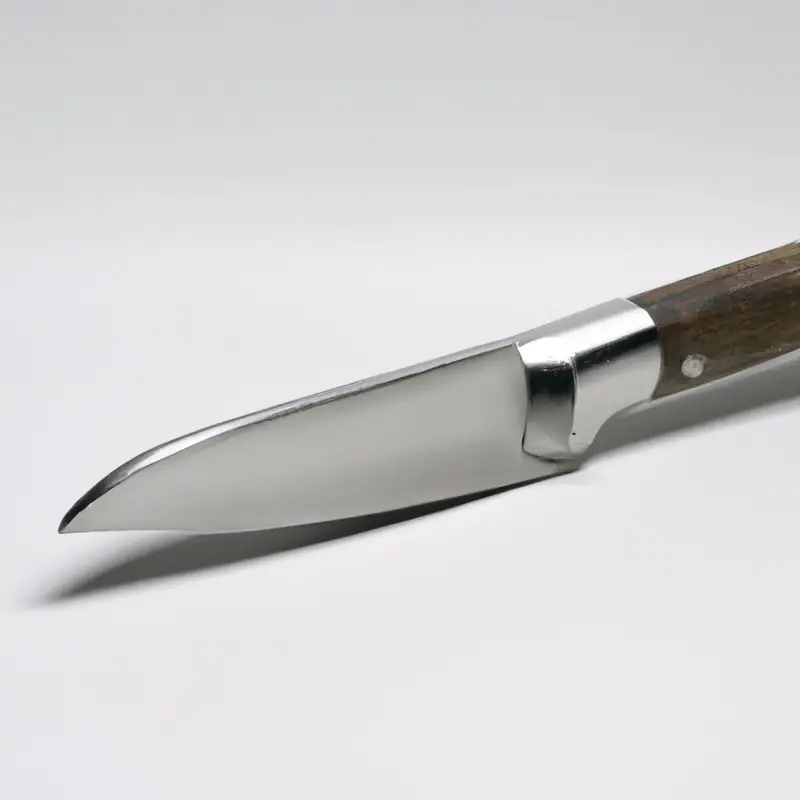
The Challenge of Peeling Tough-Skinned Fruits
Peeling tough-skinned fruits can be a challenging task, even with a paring knife. Fruits like kiwis, mangos, and pineapples have rough surfaces that can cause damage to the skin and flesh, making it difficult to remove.
The skin can be hard to penetrate, leading to waste of the precious fruit, and injuries on your fingers.
Additionally, the fruit can be slippery, making it hard to hold and control while using a knife. Care must be taken to prevent accidents while peeling.
However, with patience, practice and a sharpened knife, the challenge can be overcome, and the fruits can be peeled with ease.
Benefits of Using a Paring Knife for Peeling
Using a paring knife to peel tough-skinned fruits like kiwis has several benefits. Firstly, paring knives have a small blade that is perfect for precision work, which means you can peel fruits with ease and without wasting any of the flesh.
Secondly, paring knives are lightweight and easy to handle, making it comfortable to work with for long periods.
Thirdly, paring knives have a sharp blade that can slice through the tough skin of kiwis and other fruits without damaging the soft flesh. This ensures that you get the most out of the fruit and do not waste any of it during the peeling process.
Additionally, the pointed tip of a paring knife can be used to remove any unwanted blemishes or imperfections from the fruit’s surface.
Finally, paring knives are versatile and can be used for a wide range of kitchen tasks, including peeling, slicing, and trimming fruits and vegetables. Overall, using a paring knife to peel tough-skinned fruits like kiwis is an excellent choice, offering precision, efficiency, and comfort while ensuring that you get the most out of the fruit.
How to Use a Paring Knife to Peel Kiwis
To use a paring knife for peeling kiwis, start by selecting a ripe, firm kiwi and wash it thoroughly. Hold the kiwi with one hand and the paring knife with the other.
With the blade curved away from you, gently insert the tip of the knife just under the skin at one end of the kiwi.
Gradually turn the kiwi to cut all the way around the fruit, following the curve of the fruit and cutting just deep enough to remove the thin skin. Try to avoid cutting into the flesh of the kiwi, as it can be quite delicate.
Repeat on the other end.
Finally, cut off the remaining vine stem end. Your peeled kiwi is now ready to be sliced or diced as desired.
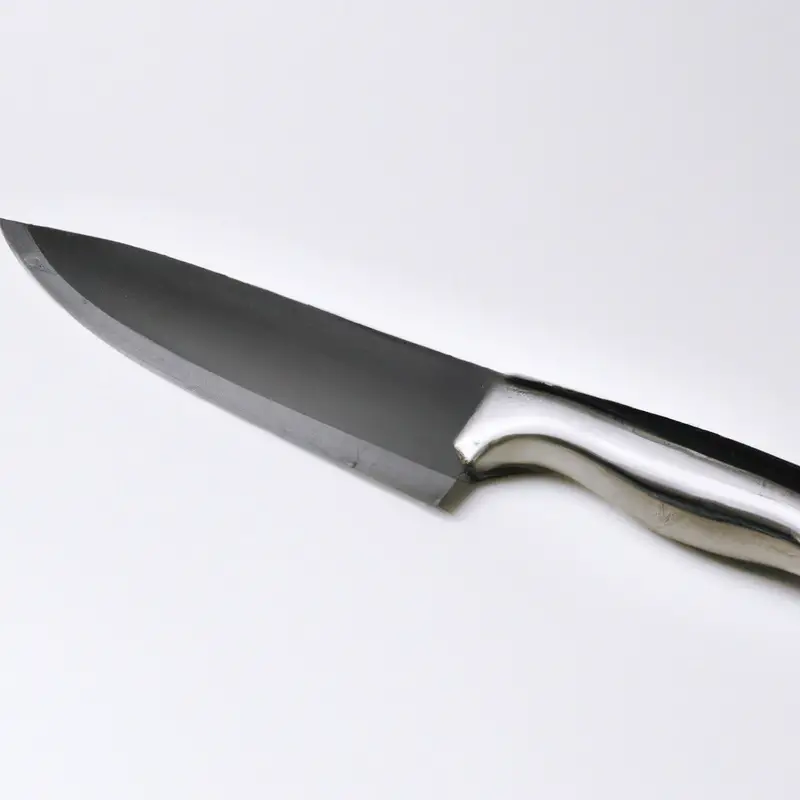
Tips and Techniques for Peeling with a Paring Knife
Tips and Techniques for Peeling with a Paring Knife:
- Choose a sharp paring knife: Using a dull knife can make the peeling process difficult, so make sure your knife is sharp.
- Hold the fruit firmly: Hold the fruit securely with one hand, ensuring it doesn’t move around while you’re peeling.
- Start at one end: Begin peeling at one end of the fruit, moving the knife towards the other end in a circular or straight motion.
- Use minimal force: Use light and gentle pressure while peeling to avoid damaging the fruit’s flesh.
- Take breaks: Take short breaks after peeling a few pieces to avoid straining your hand muscles.
- Watch your fingers: Be careful not to cut your fingers while peeling, especially around the edges and soft parts of the fruit.
- Follow the natural curve: Follow the fruit’s natural curve while peeling to make sure you’re not taking away too much peel or flesh.
- Practice makes perfect: With practice, you’ll get better at peeling tough-skinned fruits with a paring knife.
By following these tips and techniques, you can efficiently peel tough-skinned fruits like kiwis using a paring knife.
Precautions to Take While Using a Paring Knife for Peeling
When using a paring knife for peeling, it is essential to take the necessary precautions to avoid injuries and accidents. Here are some tips to keep in mind:
- Use a sharp knife: A dull knife is more likely to slip and cause injury. Ensure your paring knife is sharp before using it.
- Keep your fingers away from the blade: Hold the fruit with your non-dominant hand and keep your fingers away from the blade’s path.
- Use a cutting board: Place the fruit on a cutting board to stabilize it and prevent it from rolling, making it easier to peel.
- Peel away from your body: When peeling the fruit, make sure to move the knife away from you to avoid cutting yourself accidentally.
- Take it slow: Don’t rush the peeling process. Slow and steady movements reduce the risk of accidents.
- Clean the knife: After use, clean the paring knife with soap and water, dry it, and store it in a safe place away from children.
By taking these precautions, you can safely and effectively use a paring knife for peeling tough-skinned fruits like kiwis.
Alternative Knives to Consider for Tough-Skinned Fruits
While paring knives can be effective for peeling many types of fruits and vegetables, they may not be the best option for tough-skinned fruits like kiwis. Some alternative knife options to consider for peeling tough-skinned fruits include serrated knives, utility knives, and chef’s knives.
Serrated knives are particularly useful for fruits like tomatoes and citrus, while utility knives can work well for smaller fruits with tough exteriors.
Chef’s knives are a versatile option that can be used for a range of kitchen tasks, including fruit peeling. Ultimately, the best knife for peeling tough-skinned fruits depends on personal preference and the specific fruit being peeled.
It may be helpful to try out different types of knives to see which one works best for you.
Expert Recommendations for Paring Knives and Fruit Peeling
Experts recommend using a paring knife for peeling fruits with thin or delicate skin such as apples, pears, and peaches. However, for tough-skinned fruits like kiwis, a serrated knife or a vegetable peeler may be a better choice.
A paring knife can work for peeling kiwis, but it requires careful handling and technique to avoid damaging the fruit or injuring oneself.
When using a paring knife for fruit peeling, it’s important to keep the blade sharp, take it slowly, and use a light touch. Experts also recommend peeling in a continuous spiral, starting from the top of the fruit and working your way down in one motion.
Overall, the best way to find the right knife for fruit peeling is to experiment with different knives and techniques until you find what works best for you.
Final Verdict
A paring knife can be a versatile and efficient tool for peeling a variety of fruits, including tough-skinned kiwis. With its compact design and sharp blade, a paring knife offers benefits such as precision and control while peeling.
However, it is crucial to take precautions and follow proper techniques to avoid injury.
If faced with particularly tough-skinned fruits, alternative knives such as serrated or bird’s beak knives may be more suitable. As a final note, our expert recommendations for paring knives and fruit peeling can help you make an informed decision when selecting a tool for your kitchen.
With these insights, you can confidently and safely use a paring knife to peel your favorite fruits.

